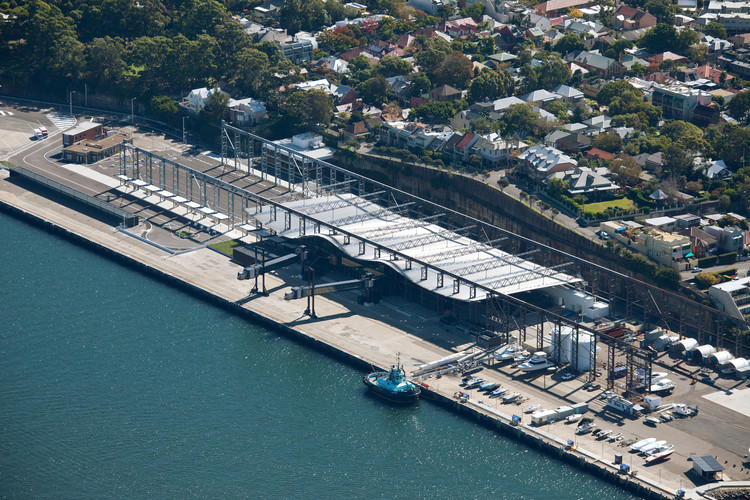
-
Architects: Johnson Pilton Walker Architects
- Area: 4600 m²
- Year: 2013
-
Photographs:Brett Boardman & Ethan Rohloff

Text description provided by the architects. Sydney Cruise Terminal is a new cruise facility located in Sydney Harbour, to serve Australia’s rapidly expanding leisure cruise industry. The design features a contemporary roof canopy draped from a historically significant gantry crane structure. The structure has been retained as a memory of the site’s previous use as a home port for the world’s first regular international containerized shipping service, commencing operations between Sydney and Europe in the late 1960’s.

This simple, lyrical gesture provides a flexible, bright and airy space suitable for a wide range of uses, and creates an iconic and memorable arrival experience for visitors to the city. As an active, vibrant and integral part of the city’s maritime heritage, identity and activity, the Sydney Cruise Terminal represents a new chapter in the evolving use of this place.

The challenge was to provide a memorable and delightful experience for cruise passengers within a degraded industrial site.Rather than completely demolish the existing high-bay warehouse, the design embraces the site’s industrial character, and retains the massive 1960’s steel gantry structure as the primary roof structure for the new use. By stripping away cladding, services and redundant structural elements, the design reveals the dramatic, beautiful backdrop of the heritage sandstone cutting to the north and opens up panoramic views back to the city skyline to the east.

The structural integrity of the existing steel elements that were to be retained and reused was carefully assessed. Rather than refinish the entire framework, selective corrosion protection and repairs were applied where required only, leaving the scars of previous uses visible. By clearly articulating new elements alongside the re-used heritage fabric, the site’s rich maritime heritage is made visible.

Averaging less than AU$2,000 a square metre, the project required innovative design solutions to meet a wide range of economic and quality objectives. The re-use of existing port assets, such as the structure, made sound commercial sense and is aligned with the client’s sustainability and heritage objectives.
























